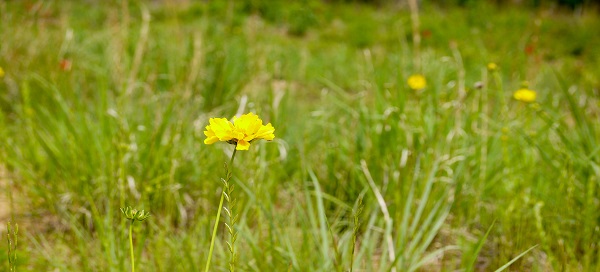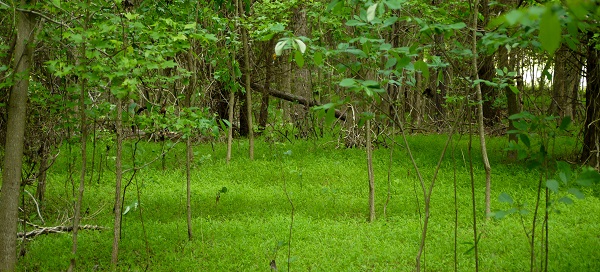
I couldn’t believe how many birds were singing. I had arrived at Horton Grove a little past 9 a.m., and I stood, camera in hand, scanning the field in front of me. The grass was green and waving slightly in the breeze, dotted here and there with fully leafed-out trees. A few clouds skirted the sky, but the sun was warm and the temperature was quickly rising. Conditions were beautiful for a morning walk.
The birds chipped, called, sang, tittered, tsk-ed, and cackled – every sound I could imagine they were making. I stood for a moment, mentally trying to separate the species before giving up and walking ahead. Many of the birds were hidden in the tall grass, but when they flitted from place to place I caught a quick glimpse of their feathers, forms, and field marks.
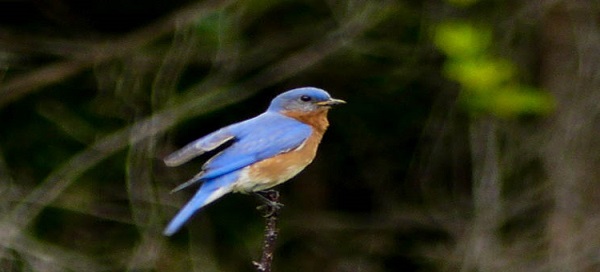
I was barely five minutes into my walk when I spotted a bright orange bird fly from the grass to the limb of a tall coniferous tree. Orange is not a color I see often, and so I quickly raised my lens and took a few quick photos. Though identification eluded me in the field, when I later flipped through my bird guide I realized it was an immature Summer Tanager, a life bird for me!
In addition to the tanager, sparrows of all kinds were buzzing in the grass, brown-headed cowbirds squabbled at the tops of trees, bright Eastern Bluebirds flew back and forth, and off in the distance I heard the drumming and kek-kek-kek of woodpeckers. It was an absolute birders heaven.
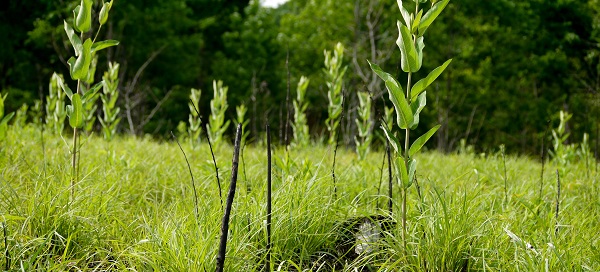
I continued along the path through the field, skirting the new raised viewing platform and heading into the woods. The atmosphere of the forest contrasted sharply with the open meadow I had just left. Where the field had been practically vibrating with avian energy, the forest was calm, peaceful, quiet. I heard a few birds moving around amidst the leaves, a call or two, but mostly I heard the stillness.
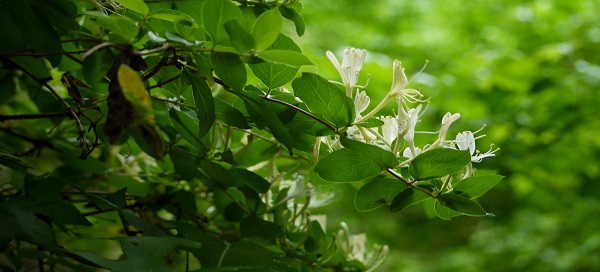
Though my hearing sense may have been less stimulated, my olfactory nerves suddenly perked up as walked into an invisible cloud of summery scent. Looking for the source of such an amazing smell, I spotted the pale blossoms of an Amur Honeysuckle. Ahead there were more, and still more, and so I was delighted to discover that the whole trail bore the delicate perfume of that beautiful flower. I loved the honeysuckle and the bright green of the leaves and herbs of the woods, but I longed to see more birds. When a fork in the path allowed me to choose, I headed back into the field.
I’m glad I did, for my best bird was yet to come. Our feathery friends come in many colors; green, yellow, orange, black, white, brown, purple, red. But few can match the incandescent blue of the Indigo Bunting, perhaps because it is not blue at all. In a serendipitous coincidence, I had just read that morning on the Audubon’s website that “they are actually black, but the diffraction of light through the structure of the feathers makes them appear blue.” Whatever the reason, seeing an Indigo Bunting fly in front of me made me feel like a piece of the very sky had taken wing, and I sat on a stump and just watched until hunger pangs in my stomach informed me it was time to leave and have some lunch.
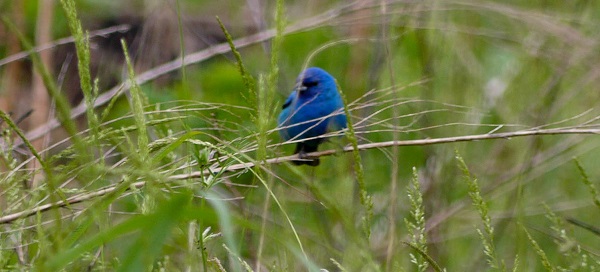
I had been at Horton Grove for nearly two hours, and yet had explored less than half of its trails. The field birds had captivated me, but I am also intrigued by the sounds of the thrushes and woodpeckers I heard from the deeper recesses of the woods. That decides it, I’ll be making a return trip!
